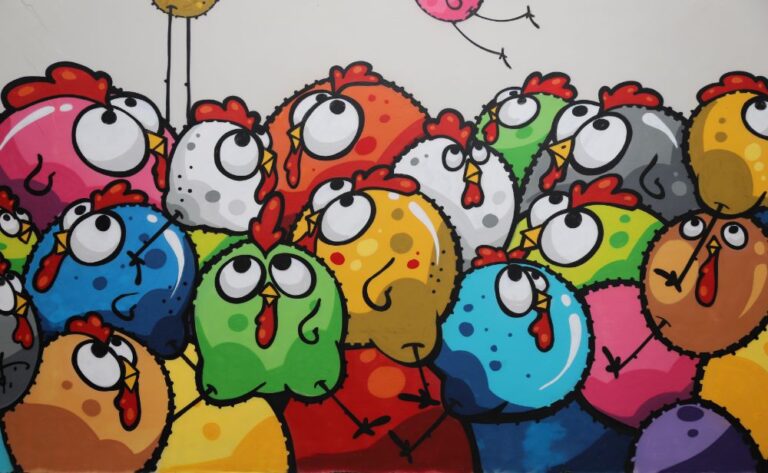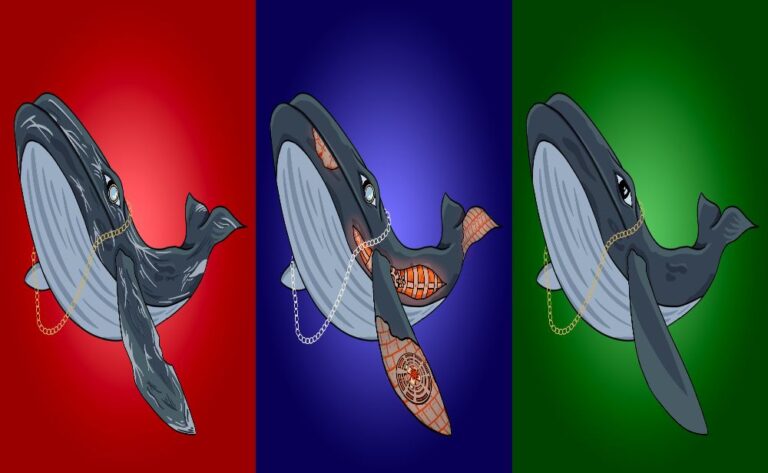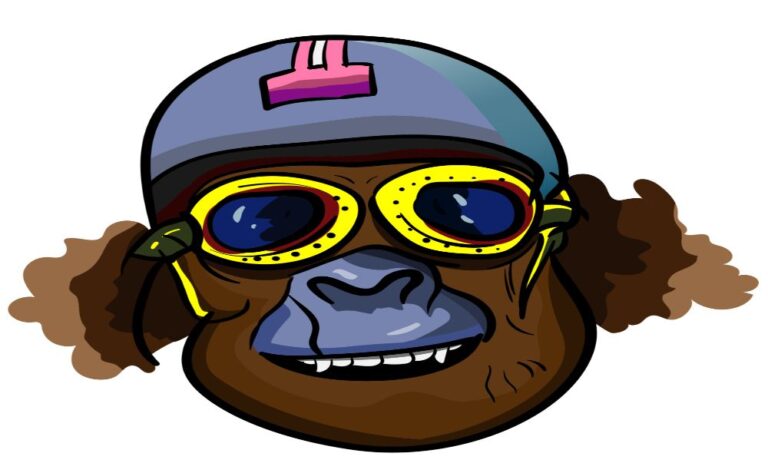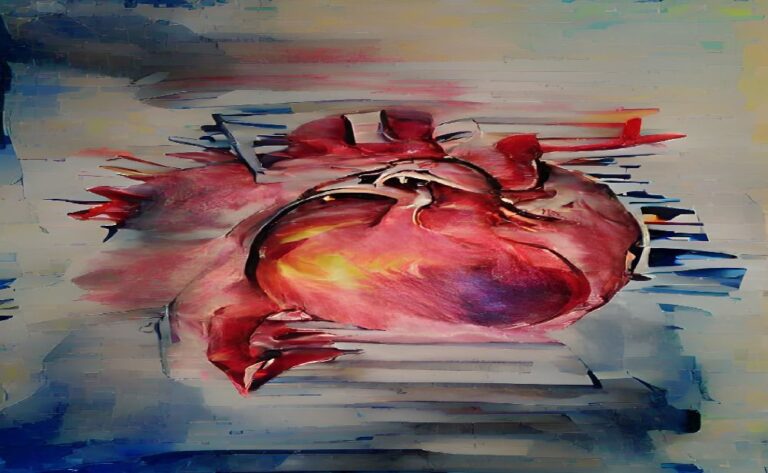
NFT gaming: 10 things you need to know
It is unavoidable that non-traditional gaming will become popular. Non-fungible tokens, also known as NFTs, are a type of digital money that is stored on a blockchain. This type of token is able to monitor the ownership of an asset no matter where it moves and can offer resell percentages to previous owners. The pursuit of unique goods, the accumulation of limited trinkets, and the opening of scarce works of art and mementos to keep and treasure ought to be an activity that comes naturally to the world’s three billion players.
However, for many people, selling NFTs is still a challenge. They can be difficult to use and have a bad user experience design (get ahead of this with our UX Design Foundations course). It is difficult to overlook the environmental impact of NFTs in their current use as well as the inherent volatility that comes along with them. The specter of loot boxes, which are paid-for assortments of random stuff, continues to haunt gamers in particular. These paid-for random bundles of items sucked cash from users.
NFT gaming, on the other hand, is expected to be one of the most significant new NFT trends in 2022, and it will be difficult for developers and publishers to ignore it. We go into greater detail about the question, “What are NFTs?” Read our comprehensive piece, but if you want to know what this revelation means for the gaming industry, keep reading (or jump straight to our NFT gaming explained section). It is likely that you will soon be designing for or making use of NFTs because a growing number of major publishers, including Square Enix, Ubisoft, Konami, Epic, Capcom, and Electronic Arts, are supporting or exploring usage of NFTs. So, what can we look forward to in terms of the development of NFT gaming? Let’s have a look…
Are you interested in learning more about NFTs and the influence that this emerging technology will have on the arts? In that case, you shouldn’t miss Vertex Week 2022, the most important virtual event for the community of digital artists. Jace Kay, a member of the Bored Ape Yacht Club, will be leading a conversation about non-fictional texts (NFTs) and the metaverse. Chris Petrocchi, an artist, will also provide guidance on how to promote your own NFT artwork.
1. Participating in NFT games will be beneficial
On the KokoSwap NFT platform, you can collect avatars and engage in fight with them. (KokoSwap is should be credited with the image)
Let’s start with the most important one. In video games, using NFTs to unlock content and add value to already played gameplay is possible. According to Chris Clarke, who works with KokoSwap, “in the gaming industry, it’s something where if the player is putting their value into the game, it just makes full sense they can take this value out of the game.” [Click here to open this article in a new browser]
This is the perspective that Ubisoft takes, as seen by the deployment of its very own platform known as Quartz and its very own in-game NFT known as Digits. Quartz was released by the publisher in the tail end of 2021 to negative fan reception, but the company persisted with the project. This is extremely important since NFTs have the potential to effectively create a market for used digital games and things.
Current users of Ghost Recon Breakpoint, Quartz’s open-world tactical shooter, are eligible to receive new free-to-play (NFT) cosmetic items, which are frequently back-dated as a reward for long-time gamers. Because of the use of NFTs, players have the opportunity to be the sole owner of an in-game object, giving them the option to trade, sell, or keep the item. It is not a novel concept that players can earn money from a game, but non-traditional forms of currency are more safe and versatile than traditional forms.
02. Players will assume control of the situation
There are currently uncommon things available for purchase in Fortnite, but no news regarding NFTs has been released as of yet (Image credit: Epic Games)
As was just discussed, gamers are accustomed to purchasing in-game stuff via a combination of microtransactions and season passes. NFTs, on the other hand, provide players more control over the game and give them the ability to sell stuff and even earn a commission on resold products in the future. This is a major deal for those players who have grown up in an era where they had to sell their old games to make money to buy new ones.
Already available are limited-time skins for games like FIFA and Fortnite, amongst others. Both of these games are designed to make resources scarce, but the game designer is in charge. Players have complete control over the purchase and resale of items when using NFTs. In the event that you joined FIFA Ultimate Team later than expected and so did not receive the initial set of kits for the season, you will be able to purchase them from other players.
In addition to things, users were able to invest in NFTs of new skills or experience points. If we take the example of FIFA Ultimate Team, this may provide players with the opportunity to earn money as team builders by allowing them to create one-of-a-kind squads and then sell them to other players on an NFT marketplace.
NFT gaming may also acknowledge the ownership that participants bring to the table.
This example of Ultimate Team brings up a significant issue that is of concern to dedicated gamers. Those players who have deep pockets would have the ability to simply buy a fantastic pre-made team, win trophies, collect NFTs as prizes, and walk away from the game without looking back. NFTs have the potential to bring about the worst characteristics of real-world football, especially if the most financially successful “clubs” succeed.
NFT games, on the other hand, may also accommodate the ownership that players may bring. The concept of customization is essential to many games; this feature might be developed to provide developers the ability to produce NFT-powered assets for their preferred games and then sell those assets on a marketplace.
This could include things like fan art or projects centered around a certain game. The GameStop NFT marketplace is an example of something that could be helpful in this regard because it provides a location for fans to exchange stuff they have developed. To employ NFTs in this manner, however, would require publishers to transfer some of their intellectual property ownership to the players of the game. (In our course, you will learn how to make an NFT as well as how to sell it.)
3. Play-to-Earn Games Will Have a Huge Market in the Future
The development of a strong domestic market and economy may be beneficial. The proliferation of play-to-earn games like Axie Infinity (you may think of its Axies as being comparable to Pokémon) is illuminating the path that lies ahead. There are also people that make their entire career off of playing these games. Play-to-Earn games aren’t going anywhere, especially ones like Axie Infinity, which has 3 million daily users (opens in new tab).
There are accusations that some Play-to-Earn games are nothing more than backdoor blockchains, despite the fact that many Play-to-Earn games share similarities to non-NFT titles like Pokémon and Stardew Valley. The accusation is based on the fact that the gameplay takes a backseat to purchasing and trading cryptocurrency in the guise of collectible items.
Aleksander Leonard Larsen, co-founder of Axie Infinity, disclosed this information while participating in a panel discussion about the metaverse at Token2049 (opens in new tab). According to Aleksander, fifty percent of the game’s participants had no prior experience with cryptocurrencies. This demonstrates how NFT games can contribute to the development of the user experience design and make blockchains accessible.
Even the most successful Play-to-Earn games, such as Axie Infinity, may be an uphill battle when it comes to navigating crypto wallets, buy-in fees, hidden expenditures, and other associated expenses before you can even begin the process of collecting beloved Axies. There is opportunity for improvement, perhaps by combining the aspects of Play-to-Earn and Free-to-Play that have the best user experience design and ideas.
Play-to-Earn also has some problems with the volatility of their earnings. It is possible for the value of items to go up as well as down, and this might result in a large number of players abandoning a game in order to pay out their winnings. It’s possible that there will be issues if the number of people coming in can’t meet or exceed the number of people leaving.
However, the structure of Play-to-Earn games is very similar to that of Free-to-Play games, and as a result, the foundations are already in place for gamers to interact with them. However, in order for gamers to participate, it is imperative that “Play” always take precedence over “Earn,” and that these trading apps do not disguise themselves as adorable creatures in order to steal your money.
04. Everything will revolve on the concept of “interoperability.”
It’s not only a huge idea; that’s a big term, too. Your NFT collection has utility across a wide variety of games, if not all of them. Since the NFT is stored on a blockchain, its data and ownership can be easily tracked, and it is immune to tampering, using it between games that use the same blockchain is a simple and straightforward process.
Quartz, which is developed by Ubisoft, might excel in this regard. The ability to link many leading gaming brands and the things associated with those brands as NFTs would be exciting for a publisher that had a number of such brands. In response to claims that it was trying to make a quick buck off of reselling Quartz, Ubisoft disclosed that the company would not profit from such transactions. Furthermore, the Quartz NFT platform will be built on the low-carbon Tezos blockchain.
Players are able to take ownership of in-game objects from the game’s publisher through the use of non-fictional transfers, or NFTs. Items obtained through the purchase or earning of NFTs on a blockchain have the potential to be utilised in other games. It is possible that you will be able to transfer your ‘Clancy NFTs’ to the new Tom Clancy shooter if, for instance, Ubisoft decides to shut down Ghost Recon Breakpoint but simultaneously releases a new Tom Clancy game.
There are concerns regarding the extent to which this can go. How feasible is it, for instance, to move an NFT between the various sorts of games that are available? It is possible that all future games may need to contain previous NFT materials, which raises the question of whether or not this use of NFTs will inhibit creative expression.
5. Video games will drive the development of the metaverse
Splinterlands (opens in new tab) and Axie Infinity (opens in new tab) are two examples of NFT-powered games that are ahead of the curve for individuals who want the benefits of blockchains and the metaverse. The metaverse will include games as one component, and non-fungible tokens (NFTs) will serve as the connecting agent between them and other aspects of our interconnected digital future.
If you read that text and you are still confused about what the metaverse is, then keep reading. You may learn more about it by reading our comprehensive guide.
Some people, like Meta, consider the metaverse to be a single entity or location; nonetheless, it is quite likely that it will involve more than a flashy Zoom call. The metaverse will be hosted on a variety of different platforms, games, and websites, allowing it to expand across the internet. The recent acquisition of Activision Blizzard by Microsoft may herald the introduction of a Microsoft metaverse that is controlled by Game Pass.
The phrase “metaverse” refers to a more general concept known as “Web 3,” which will bring about fundamental shifts in the ways in which we socialize, work, and engage in other forms of interaction. It will have a myriad of facets and settings, and we will even have a plethora of ‘personalities’ to choose from. Your identity on Linkedin is not going to be the same as the one you use on Twitter, just as your Call of Duty persona is not going to be identical to the one you use on Axie.
Video games have the potential to act as the hub of the metaverse, connecting other aspects such as fashion, music, art, and events. Brands are already racing to enter current’metavese’ games; for example, Adidas has purchased land in The Sandbox, a virtual real estate company, while Gucci has teamed up with Roblox to sell items, and Balenciaga has partnered with Epic Games, the developer of Fortnite, to offer clothing that can be purchased in virtual stores.
The metaverse is already developing, and the use of NFTs will make the process simpler and more efficient.
06 New Frontiers in Technology games will combine real and virtual worlds.
Imagine if NFTs were used in FIFA for a moment. The NFT collectible Tottenham Hotspur shirt that you (presumably) unlocked or purchased in FIFA may be used for more than just basic bragging rights within the game itself. The use of NFTs is proven to be an innovative approach to connecting the digital and physical worlds.
Both KokoSwap and the Bored Apes Yacht Club hold reoccurring events specifically for their respective owner communities. The BAYC game is scheduled for release in 2022 (opens in new tab). in order to give you a better chance of being invited to a Spurs training camp or fan event that is by invitation only. In addition to this, there is a possibility that you will obtain the extremely uncommon shirt as a wearable item.
According to Chris Clarke, who works with KokoSwap, “It’s about building connections.” Scarcity can increase the value of digital wearables in games, but there is also function in the NFTs as the two worlds begin to combine. In the future events, garments and other commodities will be pulled from games and made tangible. This will cause an increase in value for these items. According to Clarke, “it’s being able to integrate the two worlds” is what makes a jpg into so much more than it was before.
07 The in-game collectibles will be improved in the future
The majority of big game publishers are already investigating NFTs in this area. After receiving negative feedback from fans, Konami published a compilation of NFTs for Castlevania’s 35th anniversary. However, despite this, these NFTs still sold, with an average price of 12,000 dollars per NFT, indicating that there is demand.
The process of gathering in-game objects and unique loot is something that most gamers do automatically. It is immensely appealing to have the opportunity to “possess” a piece of gaming history, particularly vintage video game artwork and soundtrack. The example of Konami demonstrates that gamers swallowed their objections and purchased.
It is likely that heritage companies such as Sega, Square Enix, and EA will be unable to pass up the opportunity to offer fans a piece of history through the use of NFTs because it will be too large. If we take into account the fact that NFTs may be used to monitor ownership of physical collectibles — for example, a new statue, figurine, or painting can be marked, and its ownership can be stored on a blockchain — then we might be on the threshold of a new age in the world of game collecting.
Chris Clarke, who sees gaming NFTs in this way as demystifying NFTs, has the following to say about what he sees happening: “I see it happening because there’s so much value in that happening.” “I believe that we are quite close to achieving our goal with the technology that is being developed right now. In the case of cryptocurrencies and blockchains, I believe that scaling them is all that is required to really bring about mainstream acceptance.”
08. Non-Financial Tokens Will Replace Kickstarter
It’s not a brand new concept, crowdfunding. Fans have had the opportunity to assist in the launch of games through Kickstarter for some time now; however, the benefits that are typically offered consist of having your name included in the game and having the opportunity to play it before anyone else.
The NFT platform GameStarter (opens in a new tab) makes it possible for independent game creators to raise money for the production of their games by making in-game items available for pre-sale as NFTs. It indicates that players can choose an independent game, contribute to the development of the game financially, and gain ownership of a portion of the game.
In addition, after the game is released, users will be able to trade in-game items with NFTs via GameStarter’s built-in marketplace and associated token ($GAME). GameStarter is a platform that allows a community to be established prior to the release of a game, providing the developers with additional time for creative endeavors.
This is just one example, but GameStarter hints at a possible future in which players would be able to become investors and own a share of a game as non-fungible tokens (NFTs). For this, as with most of the rest of the new world of NFTs, considerable attention to user experience (UX) design will be necessary, as will openness about the potential dangers involved. However, NFTs have the potential to bring an entirely new facet of crowdfunding to the world of video games.
09. Fans will enjoy greater prizes
Samurai Army was developed by G2 Esports as a way to show appreciation to its supporters (Image credit: G2 Esports)
It’s not just the game itself that matters; it’s the players, the esports stars that create headlines, and the game creators who make it all possible. The use of NFTs in games has the potential to bring players and the people and teams that are responsible for the most popular games closer together.
The purchase of a game’s non-fictional item (NFT) could serve as a token that grants entry to special in-game events. G2 Esports, one of the largest esports organizations in the world, has introduced a new program called Samurai Army (opens in a new tab). Samurai Army is comprised of a series of non-fungible tokens (NFTs) that function as a ticket to a social club and provide members with benefits that are centered on gaming and entertainment.
The holders of NFTs that are used in this manner are able to gain a long-term value, which allows game publishers to combat the volatility of NFTs. For example, if you hold an NFT for Samurai Army, you will always be eligible for rewards and exclusive access, regardless of whether or not the value of the NFT has increased.
10. There will be new takes on old fitness games.
You can learn more about how Nintendo made fitness games more accessible with the Ring Fit accessory in our story on the greatest accessories for the Nintendo Switch. Now assume that you are able to make money from NFTs while you are exerting yourself. The Move-to-Earn games are based on this fundamental premise. One of the first is called StepN (opens in a new tab), and it provides players with NFT badges when they reach certain step objectives, similar to how Couch to 5K provides financial prizes.
The fact that StepN is built on the carbon-free Solana blockchain exemplifies how game designers are increasingly thinking about the broader implications of their creations. Similar to Pokémon Go, the mobile augmented reality game Genopets (opens in new tab), which is similar to Pokémon Go, provides free minting to new players. Typically, in order to mint (produce) an NFT, one must pay gas fees, which can be quite pricey.
Are there any easily accessible games that are also ecologically friendly and good for your health? Both of these Move-to-Earn games promise to a bright future for non-financial rewards and gaming in general.
An explanation of NFT gaming
What is NFT gaming?
Non-Fungible Tokens, often known as NFTs, are certificates of ownership that are issued for a digital good in a restricted quantity. This may refer to in-game objects, collectibles, or avatars in the context of a game.
Which games make use of the NFT?
Here are seven of the most popular and engaging games available on the NFT:
1. Axie Infinity, which is one of the most well-known titles in the NFT series. This is a Play-to-Earn game, comparable to Pokémon in several ways.
02. Splinterlands, a low-carbon trading card game that employs the cryptocurrency wax as its currency.
03. Tom Clancy’s Ghost Recon: Breakpoint is a Triple-A game that uses Ubisoft’s own Quartz blockchain, hosts Digits NFTs, and is built on the low-carbon Tezos blockchain. This game also uses the Quartz blockchain to host Digits NFTs.
4. Alien Worlds is a social metaverse game in which players can construct their own universes from the ground up.
5. Farmer’s World is a non-fiction text game that claims to be the first farming non-fiction text game. Construct an agricultural dynasty in an authentic environment.
06 Upland is a property trade game that makes use of actual addresses from across the world. The “Earth’s metaverse” allows users to buy, sell, and exchange virtual property that is situated in real world locations.
07. Crazy Defense Horses is a tower defense game that combines the Free-to-Play and Free-to-Earn play modes into a one package.
How does money get made off of NFT games?
NFT games generate revenue from players by requiring them to pay a fee to enter the game; for instance, in order to participate in Axie Infinity, you will need to purchase an Axie creature pack (though you can now use a starter Axie for free but limited use). Or, they take a cut of the proceeds from any non-fictional transactions that take place within the game itself.
Which non-fiction gaming book is the best?
It is generally agreed that Axie Infinity was the most successful NFT game. According to the NFT game tracker Dappradar, it has 3 million users, and the worth of the in-game items that may be obtained is $2.26 billion.





